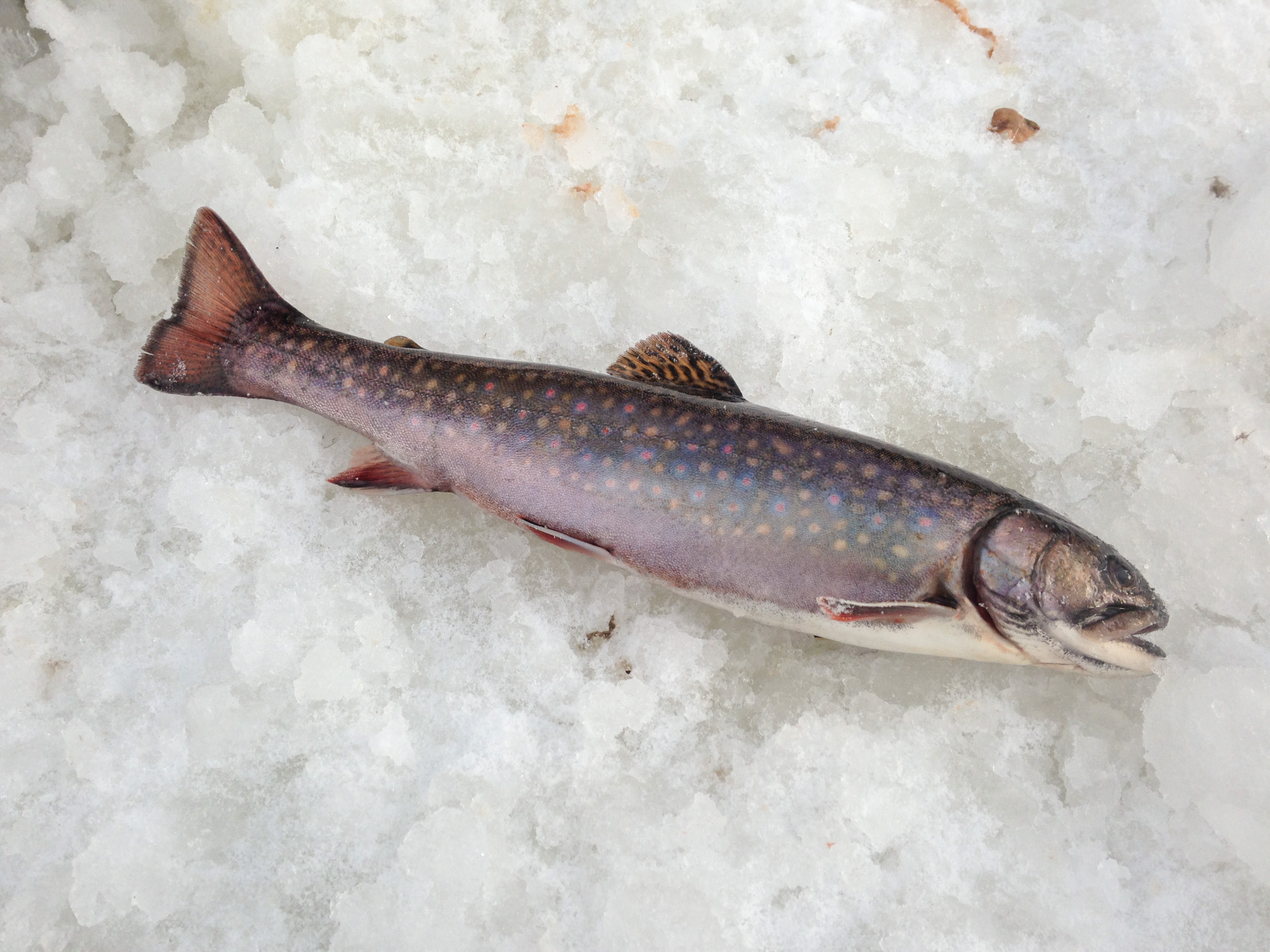Have you ever had an adventure with your fishing partner and ask yourselves why you do the things you do? I often find this the case when heading out to back lakes for the various trout species within our region—mainly brook trout and splake. These species often reside in the untouched wilderness, and can be difficult to access during the open water months. Winter gives you the perfect conditions to go out on a splake adventure!
Finding Stocked Lakes
The Ontario Ministry of Natural Resources and Forestry (MNRF) have very dedicated staff members who are continuously stocking our fisheries with both brook trout and splake to take advantage of. Fish Culture Stations are located throughout the entire region including Blue Jay Creek Station on Manitoulin Island, North Bay Station in Redbridge, and Hills Lake in Englehart. These locations can cover and supply our entire region and, most importantly, provide fishing opportunities to us all. Their hard work doesn’t go unnoticed and I want to extend a BIG thanks to them!
The MNRF’s excellent online tool, Fish OnLine, shows you all the stocking records and types of species in each water body. This tool is very useful for those of you that wish to explore new waters or expand on your local surroundings. A bit of research, use of stocking lists, and a will to explore can lead you to BIG adventure and fish of a lifetime. And always make sure to check your zone specific Ontario Fishing Regulations.
Finding the Fish
The cold water and uniform distribution of oxygen throughout the entire lake provide endless habitat for the trout, which rely on cold water to survive. In summer months, trout seek refuge from the warm water so there is no need to only search the deep water for trout in the winter. In my experience, brook trout tend to roam the shallow water along shorelines and back bays so I look for 3 – 6’ of water, almost bottoming out my auger while drilling any holes.
Splake provide a few more options because they are a hybrid between brook and lake trout. This means that they often share habitat preferences from both species. I have had luck fishing in shallow and deeper spots where I would traditionally fish lake trout. Regardless of your choice of species, both can be aggressive fish but there are never any guarantees when fishing.
Even if you are fishing a stocked lake, these species can be finicky and you shouldn’t limit yourself to the first holes of the day. Continue to drill holes methodically—start shallow on a point or flat and work your way to the deeper water. If you get a bite or mark fish at a certain depth, continue to drill holes along that depth to really dial in on your bite.
Choosing the Right Bait Presentation
Your bait presentation can be as basic or advanced as you choose. A standard tip-up or still line matched with a night crawler or minnow has been proven time and time again. Other options include spoons of all shapes and sizes. Some of my favourites include Williams and EGB brands, but the market has a wide variety that will meet your every need. Other tackle choices include panfish style baits tipped with maggots or wax worms all the way up to tube jigs and swimbaits. (Check here for more ideas about what to have in your ideal winter tackle box set up.)
Another factor to consider is that most of the trout lakes in Northeastern Ontario are very clear; consider using a lighter line, or even fluorocarbon. Fluorocarbon has two distinct advantages; it’s stronger so you can use a lighter line and is nearly invisible to fish. The lighter line will impart more action on your bait, making it look more natural, which usually equals more success. Try your best to locate the fish and determine how they want the bait presented. Once you narrow down these two key items success will inevitably follow.
The month of February is usually a great time to hit these back lakes as snow accumulation and good ice conditions are often present. Always be very careful when visiting new lakes as fresh water springs, current flows, and weather patterns can drastically change ice conditions around the lake. Do your research, get a friend on board, pack for the adventure, and look back in awe at the journey you took, and the fish that were the reward for your efforts!









